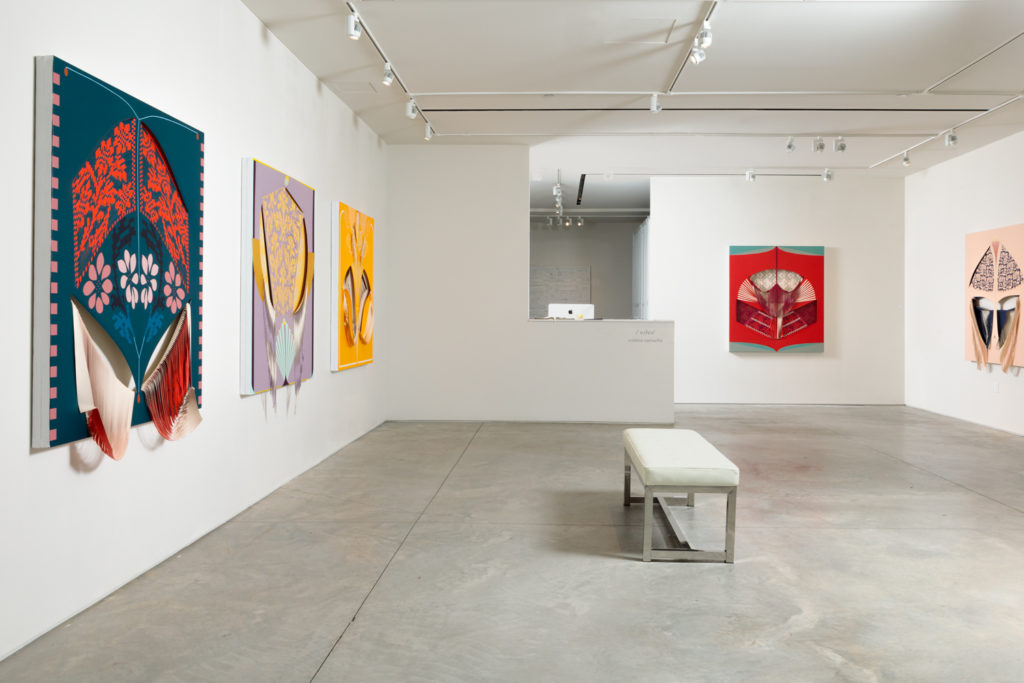Not an artist of many words, for contemporary artist Cristina Camacho the simple fix for the conceptual difficulty of making art: make more art
Every artist has her or his own purpose. For me, it is fighting for what I believe in. As I mentioned before, right now it is about giving a voice to the vulva. To women’s rights. Fighting against a male-dominated world and industry.
Artist portrait. Contemporary artist Cristina Camacho. Photo Credit Gregory Gentert
Take us to the beginning of your story. How did your tryst with art begin?
I don’t know about the beginning, but I can tell you about the first memory I have of me making ‘art’. I was a child, not sure how old, and I drew the most beautiful bird standing on grass. It felt good to use purple, orange and all the colours of the box to depict the green grass. I truly believed I was unique for seeing all of those colours while my friends were only using the green pencil. I kept this drawing for many years. And I was proud of it. Of course, I was naïve to think I had made something different and new.
It wasn’t until many years later, when I traveled to Europe, that I learned that more than a century ago this group of artists called the Impressionists, painted colour and light in ways that were beyond my imagination. In that moment, I knew I had so much to learn, and that if I really wanted to be an artist, I had to open my eyes to the world.
Crowning at Midnight, Acrylic on Canvas, 2019
Tell us about the evolution of your process and practice over the years.
Every once in a while there is a moment when I stop being surprised with my work. It is in that exact instant when I have to be self-critical and try new things. Evolving is always challenging. It can feel like a waste of materials, energy and time. It is an exercise of unlearning all the techniques that you have tried to master in the past with a lot of effort and dedication. Not that I have accomplished all of it. In order to create something new one has to find that element of surprise again.
Still Shot of solo show, /ˈvʌlvə/ , at Praxis Gallery New York
What is the primary role of an artist? How do you describe yourself in the context of challenging people’s perspectives via your work and art?
I do not believe there is a primary role. Every artist has her or his own purpose. For me, it is fighting for what I believe in. As I mentioned before, right now it is about giving a voice to the vulva. To women’s rights. Fighting against a male-dominated world and industry. Many activists have been fighting this fight for so long and few things have changed. There is still a lot to challenge.
Final Act, Contemporary artist Cristina Camacho. Acrylic on canvas 2019
How do you balance art and life?
Art and life are synonyms.
How do you deal with the conceptual difficulty and uncertainty of creating work?
Making more work.
How does your audience interact and react to your work?
I try not to think too much about the audience and their reactions. Not that I do not care or believe they do not matter.
Quiet Scent, Contemporary artist Cristina Camacho. Acrylic on Canvas, 2019
What are you looking for when you look at other artists’ work? Which shows, performances and experiences have shaped your own creative process? Who are your maestros?
If I were to write the name of every artist that has ever inspired me the list would be endless. Everything you see and experience shapes the creative process, even when you don’t relate to it. Having examples of what you do not want to be or create is as important as those examples that positively inspire you.
Before you go – you might like to browse our Artist Interviews. Interviews of artists and outliers on how to be an artist. Contemporary artists on the source of their creative inspiration.
